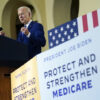Understand the timeline for seeing fitness results and the factors that can impact progress, such as genetics, diet and consistency.
Whether it’s losing weight so you can fit into your wedding gown or tux or trying to firm up to get in shape for summer beach season, you want to see quick fitness results.
But how quickly can you expect to see your dieting and exercising pay off? More importantly, how quick is actually healthy? What is the most sustainable way to drop unwanted pounds?
The Downside of Fast Results
People who are trying to lose weight would love to drop pounds quickly and easily. Of course, that’s not how weight loss typically works. An array of factors affect how quickly you can lose weight even when you adopt a new diet and exercise routine, says Dr. Namratha Kandula, a primary care physician and professor of medicine and preventive medicine at the Feinberg School of Medicine at Northwestern University in Chicago.
Factors that can affect an individual’s weight loss include their age, biological sex, genetic background and hormones. It’s typically harder to lose weight as you get older, and it’s even harder for women, Kandula says. Many women put on weight, particularly around their midsection, as they go through menopause. Also, certain hormonal conditions – like hypothyroidism – can cause weight gain.
In an effort to lose weight quickly, some people adopt highly restrictive diets that call for cutting calories drastically. Low-calorie diets call for the consumption of as few as 800 to 1,500 calories a day.
To put those calorie levels in context, the 2020-2025 Dietary Guidelines for Americans states that women need 1,800 to 2,400 calories each day to maintain their weight, and men need between 2,200 and 3,200 calories daily. For both genders, caloric needs are expected to decrease with age.
But adopting drastic measures to drop weight quickly may be counter-productive to your fitness and weight loss goals.
Crash diets may lead to short-term weight loss but are difficult to maintain in the long run.
“When you stop a crash diet, you tend to regain weight because you go back to your old eating habits,” Kandula says.
While your body is consuming dramatically fewer calories, it feels like it’s being starved and starts to burn protein – that is, muscle – for energy. The body also starts to produce hormones that promote weight gain. When you’re on a significant calorie reduction regimen, your body produces the hormone ghrelin, which increases your appetite and promotes fat storage in the body.
This reduction in basal metabolic rate – the number of calories you burn just to function at rest – means that fast weight loss generally isn’t maintained for long and, instead, leads to rebound weight gain, explains Marie Spano, an Atlanta-based board-certified sports dietitian and registered dietitian.
In one University of California–Los Angeles review, about two-thirds of dieters who successfully lost weight ended up gaining back their weight – and then some – within four to five years.
In addition, diets that are too low in calories decrease your body’s ability to synthesize new, metabolically active muscles, largely nullifying your workout efforts, Spano says. They also reduce your overall energy levels to make your workouts feel harder.
Healthy Weight Loss
As to what constitutes a healthy rate of weight loss, that depends on where the individual is starting from, says Dr. Mir Ali, a bariatric surgeon and medical director of MemorialCare Surgical Weight Loss Center at MemorialCare Orange Coast Medical Center in Fountain Valley, California. In general, people who are trying to lose weight should aim to burn 500 to 1,000 calories a day more than they consume. At that rate, most individuals would lose a pound or two per week, which is a reasonable and healthy goal.
People who are overweight or have obesity may lose five to 10 pounds or so a week, initially, Mir says. The reason for that is twofold: First, the more weight someone carries, the higher their basal metabolic rate and the more calories they burn to keep their body functioning properly. Second, carrying extra weight means that body needs to use more energy to move the extra mass. The number of pounds that a heavier individual will lose over a week will likely plateau over time as they drop pounds and become more fit.
The best way to lose weight is to adopt a healthy eating regimen while exercising regularly.
“The goal should be to exercise consistently, not to try to engage in super-strenuous exercise all the time,” Mir says.
Getting 30 minutes of moderate or vigorous cardio exercise five times a week and performing strength training twice a week, coupled with a healthy diet, should lead to weight loss. Federal guidelines recommends that adults engage in at least 150 minutes (2 hours and 30 minutes) of moderate-intensity or 75 minutes (1 hour and 15 minutes) of vigorous-intensity aerobic activity each week. Moderate-intensity activity includes activities such as brisk walking, hiking, water aerobics and dancing.
Fitness Improvements
When people launch a healthy eating and exercise routine, they often notice improvements in their physique even before the first pound drops, Spano says. That’s because reducing your intake of processed foods, excess sodium and refined carbs can lead to a noticeable reduction in bloating within a day or two.
Reduced weight isn’t the only sign of improved fitness. You’ll start to notice that your clothes fit differently and that your cardiovascular endurance and strength are improving. If you want track your program, you can measure your body fat percentage by doing a body composition analysis.
People who start a new fitness regimen often experience increased energy and improved sleep, as well.
“When you exercise, you’re more tired, and your brain and body are ready to rest,” Kandula says.
Poor sleep is associated with high blood pressure and greater risk for heart disease, so it’s important to get regular, high-quality sleep for your overall health.
Working out can also improve your outlook on life. When you exercise, your body releases endorphins, a feel-good hormone, which lifts up your mood and alleviates stress and anxiety.
“Exercising is a natural high,” Kandula says.
Exercising regularly helps make some people feel more confident.
“Once (people) develop a regular exercise routine that they enjoy, they start to feel more confident in their ability to work out and feel better overall,” Kandula says. “They’ve learned something new, and they’ve made a positive change.”
Eating for Fitness Results
Your body needs fuel – as in food – to have enough energy to exercise and boost fitness, says Nancy Clark, a registered dietitian and sports nutritionist with a private practice in the Boston area and author of “Nancy Clark’s Sports Nutrition Guidebook.”
“Most of the people I work with come to me saying, ‘I’m low on energy. I’m tired all the time,’” Clark says. “If they just change their eating patterns, they see results immediately.”
Taking in 200 to 300 calories before a workout helps people perform better, she says, compared with exercising on empty. But it’s important to choose your pre-workout snacks wisely.
If you’re getting up and running before work, hydrate with water or coffee and have a banana or piece of toast with peanut butter first to get some gas in your tank.
“Unless you have a hefty dinner and nighttime snacks, eating breakfast before a morning workout will boost your blood glucose, which can drop overnight,” Clark says. “Given the brain (which controls your muscles) relies on blood glucose for fuel, you’ll have more pep in your step.”
Refueling is important too. For example, if you go for an early-morning run, you will likely be hungry by mid- to late-morning. Heed your hunger cues and consume healthy snacks, like fruit or whole-grain crackers. Or, you can have an early lunch and then, if you become hungry in the afternoon, consume a light snack, like trail mix, nuts, apple slices, carrot sticks or celery, Kandula says. This will curb your appetite until dinnertime.
If losing weight is the result you’re seeking, most experts suggest following an active lifestyle and chipping away by dropping a half-pound a week or so. Losing weight incrementally is an approach most experts endorse. It’s a way to make progress toward your weight loss goals without feeling deprived. Research shows that changing your habits over time and in a way that fits your lifestyle leads to steady and sustainable weight loss, Kandula says.
Gauging results by the scale is not really the best way and is not always an accurate representation of someone’s health.
“The goal is to be fit and healthy, and at peace with food and at peace with their body,” Clark says. “There’s not a number on the scale that’s associated with that.”
How to Safely Accelerate Your Results
Follow these eight approaches for fast fitness results that are safe, effective and sustainable.
1. Increase your workout intensity and protein intake. Research published in 2016 in The American Journal of Clinical Nutritionshows that a combination of high-intensity exercise and increased protein consumption allows people to lose more fat and build more muscle, while cutting calories. The less calories you consume, the higher your total protein intake should be to decrease muscle mass loss during weight loss, Spano says.
2. Eat to fuel your body. Calorie needs vary greatly between people and, while caloric deficits (burning more calories than you consume) lead to weight loss, too great of deficits can lead to fat retention. Meanwhile, a caloric surplus (consuming more calories than you burn) is ideal for muscle building, Spano says.
Instead of getting hung up on calorie math, focus on food as fuel. Listening to your hunger cues and filling up on whole, minimally processed foods will help you consume more filling fiber, prevent excess insulin secretion and fat storage, and help you reach both your fat-loss and muscle-gain goals.
3. Prioritize strength training over steady-state cardio. Engaging in high-intensity interval training on a hydraulic resistance system can burn more calories than spending the same amount of time exercising in a steady-state exercise session, according to research published in the Journal of Strength and Conditioning Research. With a hydraulic system, you use cables, handles or straps that you either push or pull for resistance training. Unlike old-school weightlifting with barbells, dumbbells and other weights, you can target certain muscles by exerting force using the hydraulic system. Be sure to work in strength training as part of your workout regimen.
4. Make time for recovery. You can injure and fatigue your muscles by over-training. You want to give your muscles time to recover. Many fitness experts recommend at least one full day of rest per week. Try not to intensely train the same muscle group twice within a period of three days.
5. Switch up your training routine after six to 12 weeks. Many people get bored doing the same thing over and over.
“Changing up your routine breaks up the boredom and activates other muscles which may not have been as active before,” Mir says. For example, in a gym, you could devote a day to working on your arms, another day to exercising your shoulders, then switch up to focus on your core or legs.
6. Consider using fitness apps. There are a wide variety of fitness apps that can coach you through various cardio and strength conditioning routines. Try different workout to see which ones you like. There are apps that let you work indoors and outdoors. Plus, because the workouts are in your smartphone, you can take them with you when you travel.
Fitness apps that allow you to work out at home include:
- Peloton Digital.
- Apple Fitness+.
- Beachbody On Demand.
Types of workouts available on fitness apps include:
- Strength training.
- Cardio.
- Yoga.
- Pilates.
7. Don’t be alarmed if your weight loss results haven’t been what you expected since the pandemic began. If your results have slowed down, don’t panic.
“Between (COVID-19) lockdowns, canceled classes and limited gym equipment, we’ve been forced to exercise on our own more,” Spano says. “Many people don’t train as hard on their own as they do with a workout buddy or trainer. Training among others motivates us while personal trainers push us to work harder in class and get those last few reps in. Also, during the pandemic, there has been an increase in sleep disturbances, stress and stress eating.”
Spano notes that several surveys have shown that many Americans have gained unwanted weight since the pandemic began. For example, 42% of adults reported gaining more weight than they intended since the start of the pandemic, according to a survey from the American Psychological Association’s “Stress in America: One Year Later, A New Wave of Pandemic Health Concerns” report.
“If the scale didn’t budge or even went in the wrong direction, be easy on yourself,” Spano says. “For faster results moving forward, hire a strength coach or personal trainer and dietitian to keep you on track.”
8. Become part of a workout community. Exercising with a friend and having a social support network can increase your enjoyment of working out and make you feel accountable on days when you don’t feel like moving your body.
“You may not feel like working out one day, but knowing an exercise partner is counting on you gives you the impetus to show up,” Kandula says. “The same with a (workout) community, if someone depends on you, you’re more likely to show up. Being part of a community is also good for stress reduction.”
Copyright 2021 Associated Press. All rights reserved.
Source: https://health.usnews.com/wellness/fitness/articles/how-long-does-it-take-to-see-fitness-results









































